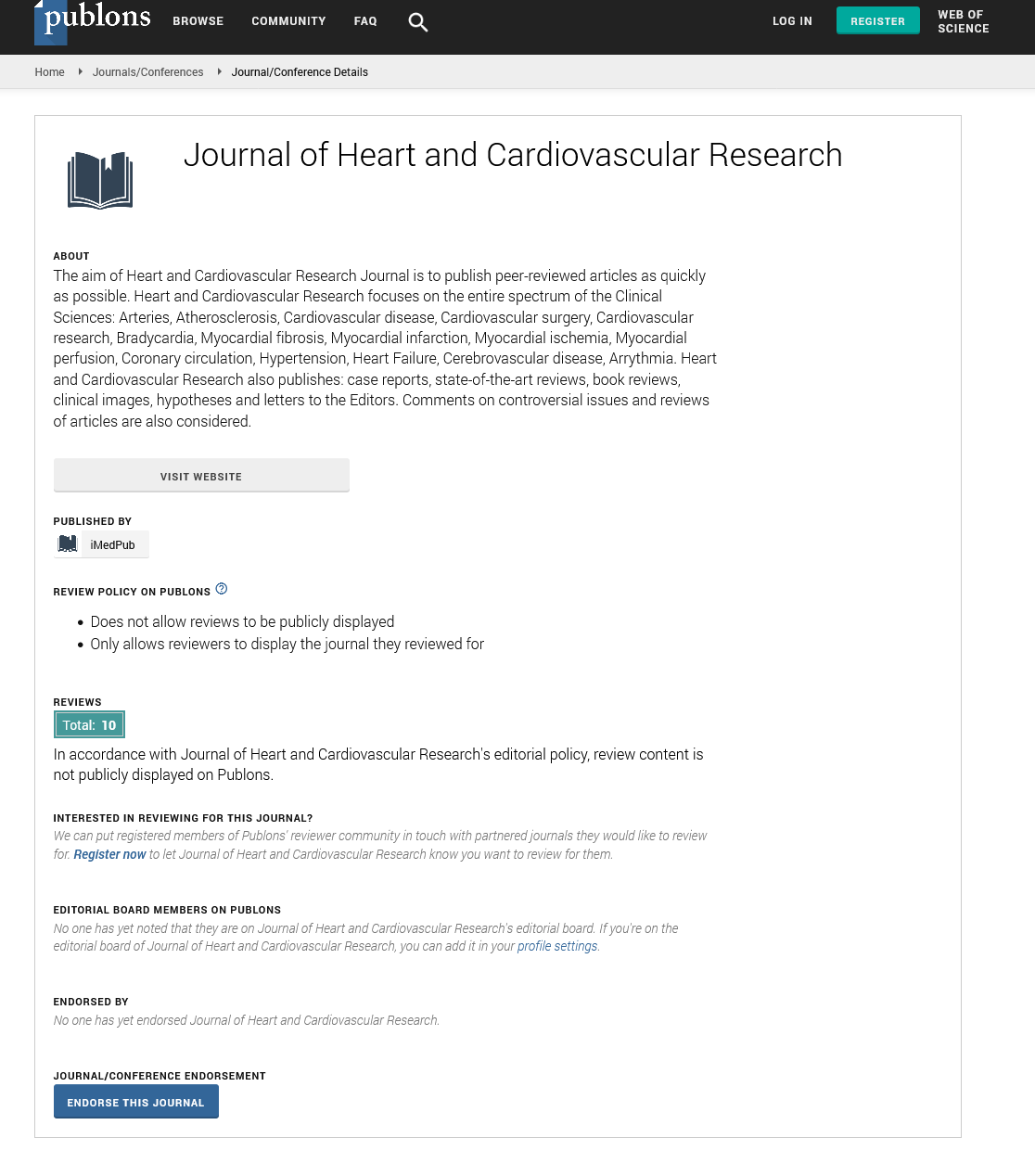ISSN : ISSN: 2576-1455
Journal of Heart and Cardiovascular Research
Abstract
Volume-outcome relationship in surgical aortic valve replacement for patients with aortic valve stenosis:a retrospective analysis of administrative data
Objective: The volume-outcome relationship between isolated surgical aortic valve replacement (SAVR) and mortality in patients with aortic valve stenosis remains unclear. This study aimed to assess this relationship using a large-scale study conducted in Japan. Methods: We conducted a retrospective cohort study of adult patients with aortic valve stenosis hospitalized between April 1, 2012 and March 31, 2015. Hospitals were categorized into 3 groups based on SAVR volume: low volume (≤49 cases), intermediate volume (50–99 cases), and high volume (≥100 cases). A multiple logistic regression analysis was performed with in-hospital mortality as the dependent variable and hospital volume groups as independent variables. Results: The low-volume group, intermediate-volume group, and high-volume group comprised 7383 patients from 330 hospitals, 5253 patients from 76 hospitals, and 3411 patients from 23 hospitals, respectively. The regression analysis accounted for patient sex, height, weight, activities of daily living, and comorbidities as covariates. Relative to the intermediate-volume group, the odds ratios for in-hospital mortality were 1.32 (95% confidence intervals: 1.07–1.61; P<0.01) in the low-volume group and 0.65 (0.48–0.87; P<0.01) in the high-volume group. Conclusion: Higher hospital volume was significantly associated with reduced mortality, and patients with aortic valve stenosis may benefit from care in high-volume hospitals.
Author(s): Takeshi Umegaki, Susumu Kunisawa, Yasufumi Nakajima, Takahiko Kamibayashi,Kiyohide Fushimi and Yuichi Imanaka*
Abstract | Full-Text | PDF
Share This Article
Google Scholar citation report
Citations : 34
Journal of Heart and Cardiovascular Research received 34 citations as per Google Scholar report
Journal of Heart and Cardiovascular Research peer review process verified at publons
Abstracted/Indexed in
- Google Scholar
- Sherpa Romeo
- China National Knowledge Infrastructure (CNKI)
- Publons
Open Access Journals
- Aquaculture & Veterinary Science
- Chemistry & Chemical Sciences
- Clinical Sciences
- Engineering
- General Science
- Genetics & Molecular Biology
- Health Care & Nursing
- Immunology & Microbiology
- Materials Science
- Mathematics & Physics
- Medical Sciences
- Neurology & Psychiatry
- Oncology & Cancer Science
- Pharmaceutical Sciences
